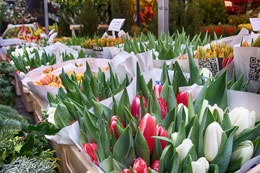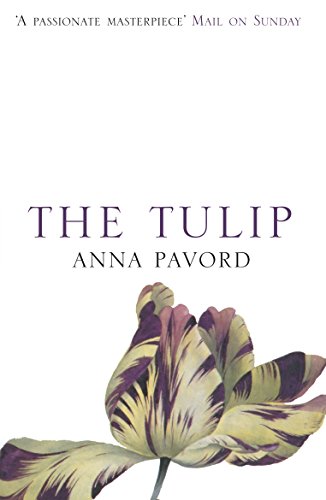The fascinating tulip’s and its equally fascinating history
Tulip, a brightly colored jewel is originally from Kazakhstan whose part was conquered by the Ottoman Empire (present-day Turkey) in the 16th century. The Turks were quite impressed by the tulips’ beauty when they discovered them in the mountains of Kazakhstan. Some of them were plucked by the Turks so they can plant them in the gardens of the most powerful people in the Ottoman empire.
Constantinople, now known as Istanbul, was one of the most beautiful cities in the 16th century that had the most astonishing gardens in the world. People from all around the world came to see and admire the beauty of the unique flowers planted in those gardens. A big party was thrown by the Sultan Suleyman the first when the tulips were in bloom. The sultan was generous enough to give some tulips to the most important guests in the house such as Ogier Ghiselin de Busbecq, the Viennese ambassador to the Ottoman Empire.
When de Busbecq came back to Vienna, he gave some of the tulips (given by the Sultan), to his friend Carolus Clusius who also managed the gardens of the emperor in Austria. In the 1590s, he became the head of the Hortus Botanicus in Leiden. Carolus was the ambassador to Istanbul for Ferdinand I, the Holy Roman Emperor. He planted the tulips in Europe and they became one of the most popular flowers today.
In 1592, Carolus wrote a book on tulips which became so famous that people started considering tulips as some kind of gem and raided his garden to steal the tulip bulbs – it was done on a regular basis. Tulips became so popular back then and were a symbol of power and wealth. To express superiority, the Ottoman Sultans wore a tulip on their turbans as well. The name tulip is derived from a Persian word “tulipan” which means turban – this name was given to these beautiful flowers because their shape seemed very much like an original turban.

At the peak of the tulipomania, the prices of a single tulip bulb exceeded to over ten times what a normal craftsman could make in a year. Due to this massive growth of the tulip market, traders started offering inflated prices for just a tulip bulb that had yet to flower. A single normal tulip bulb cost between 3000 to 4200 guilders, which were also known as florins, the tulip’s price depended on the size of the bulb. At this time, a skilled craftsman made around 300 guilders a year. One tulip would equal 10 to 14 years of work. This was the first economic bubble in the history that was caused due to merely a flower.
An economic bubble is when something is charged over what it is really worth, people will just keep buying and buying that item because they think that the price will only go higher until they will not be able to buy them anymore or always sell of higher value. This goes on until somebody decides that the pricing on the item is ridiculous and will not buy the item anymore. This eventually leads to the item’s market crashing and many people’s economy crashing.
There was a book written by Charles Mackay in 1841 on Holland’s economic bubble of tulips. There have been speculations by many modern scholars on this book to see if the information is authentic or not. He wrote in his book that once during Holland’s tulipomania, 12 acres of land was worth one Semper Augustus bulb. This bulb was very hard to get and so that was why it was worth so much.
Several scholars believe that Charles Mackey’s summarization is over-exaggerated and that the tulipomania was not as drastic as he wrote in his book. This could be plausible for there was limited data obtained from the 1630s and much of the research comes from anti-speculative researchers. Many modern economists have several rational explanations for this mania. Some do not even believe that this event was a mania – but just a drastic rise and fall in the prices of tulips just like any other thing in the world.
Want to know more on the interesting history of the tulip and its effect on the economy? Read this book The Tulip: The Story of a Flower That Has Made Men Mad – it packs all the amazing things that played their part in developing the tulip into an amazing worldwide phenomenon it is today.
Tulips Today
Now, tulips are grown in every part of the world in different colors, and you no longer have to sell your house to get one for yourself. The Netherlands is the biggest exhibitor of tulips today. You can find millions of tulips, hyacinths and a number of other beautiful flowers that transform the landscape into a sea of multi colors, which is something to die for! Especially Kop van Noord-Holland and Noordoostpolder are the places where you can find tulips growing in a massive amount.
The Dutch aren’t just a prodigy of massive tulip production but also known as the biggest traders of flower bulbs. In 2017, they took over the flower market by producing a whopping 2 billion flower bulbs. It isn’t surprising that the Netherlands owns 77% of worldwide flower bulbs trade solely, in which 40% are known for being tulips.
Each year in Noordoostpolder, a festival is held in the middle of tulip fields that runs from late April to early May. If you are a tulip lover, you can visit World’s Biggest Flower Auction housed in Aalsmeer, near Amsterdam – that is quite an amazing event to experience.
Amazing Facts About Tulips
Here are some interesting facts about tulips that every tulip lover should know:
- There are more than 150 species of tulips with over 3000 varieties around the world
- Tulip’s buds are known for being almost perfectly symmetrical – nature is a work of art indeed!
- They are a part of the lily family
- Even if you put tulips in a vase, they will bend and twist to grow towards the light
- Its blooming period is only 3 to 7 days in the spring
- They are available in almost every color
- Petals of tulip are edible and can even be used in place of onions in lots of recipes
- The Netherlands is the biggest producer and exporter of tulips in the world – with over 3 billion export each year
- When tulips came to the Netherlands for the very first time, they impressed the world with its unique shape and look – weird thing is that back then a sailor confused a rare tulip bulb with onion and ate it with his sandwich – he was charged with a felony and jailed




